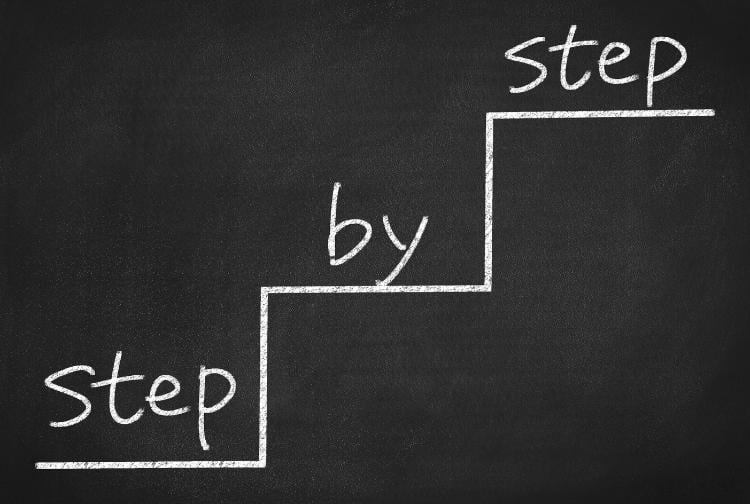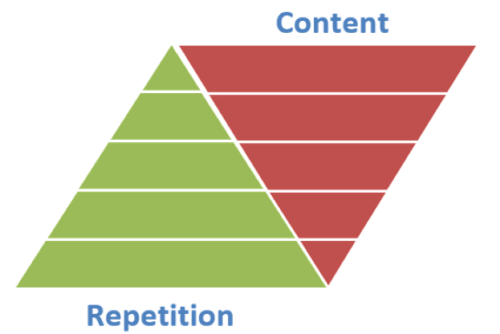
Developmental dyscalculia is a specific, severe, and persistent difficulty in understanding numbers. It affects 3–10% of the population and can co-occur with other developmental learning difficulties. Learn six tried and tested steps to overcoming dyscalculia.
Overview of dyscalculia
Dyscalculia is known to run in families, which suggests that genetic factors contribute to the risk of developing this learning difficulty. Additionally, it is accompanied by cognitive skill and numerical processing deficits, and there is strong evidence of malformations in the brain’s right parietal lobe.
The most generally agreed-upon characteristics of dyscalculia are (1.) difficulty learning and remembering arithmetic facts and (2.) difficulty executing calculation procedures with immature problem-solving strategies, slow solution times, and high error rates. Other symptoms include (3.) poor number sense and (4.) an inability to subitize (perceive without counting) even tiny quantities.
Numeracy is essential for survival in society. Whether in daily living, work, or leisure, we cannot escape the use of numbers. Every job requires math, from farming to rocket science! The effects of mathematical failure can seriously limit career and life choices. It may shut the door on a student’s vocational dreams and undermine their aspirations to become a teacher, engineer, or doctor. Math is needed no matter the language you speak or the country you live in.
Dyscalculia cannot be corrected with medication. Instead, specialized differentiation strategies are required to enable dyscalculic learners. Below are six steps needed to overcome learning difficulties in mathematics.
1. Teach step-by-step
Specific skills need to be mastered before one can learn subsequent skills. For example, a child is trained to pass, control, dribble, and shoot the ball before learning to play soccer. They will have two left feet on the soccer field until these foundational skills have been automatized. The same applies to math.

Foundational brain-based skills required for mathematics include visuospatial skills, sequential memory, procedural memory (the memory of how to perform certain routines or tasks), working memory (the ability to hold information in your mind and manipulate it mentally), and logical thinking.
In addition, foundational math skills include counting and skip-counting. The role of counting in math can be compared to the role of letter-sound relationships in reading. Other foundational math skills are understanding place value and performing simple addition, subtraction, multiplication, and division calculations.
2. Teach in a multi-sensory way
Information enters the brain through three main channels: visual, auditory, and kinesthetic. Children with learning challenges are particularly weak in one or two of these channels. A multi-sensory teaching style will enable learners’ stronger channels to support their weaker ones (Hornigold, 2015). The cone of learning illustrates this point very well: we remember 10% of what we read, 20% of what we hear, 30% of what we see, 50% of what we see and hear, and 70-100% of what we hear, see, say, and do.
The Concrete, Pictorial, Abstract approach (CPA) is a multi-sensory approach that works particularly well to help dyscalculic students grasp complex math concepts. It consists of three stages:
- Concrete is the ‘doing’ stage, during which students will use concrete objects to solve problems, e.g., arranging four rows of seven blocks each to represent 4 x 7.
- Pictorial is the ‘seeing’ stage, where students bridge from the concrete to the abstract levels of understanding by looking at or drawing pictures, circles, diagrams, or models. In the 4 x 7 example, students will now draw four rows of seven blocks each.
- Abstract is the ‘symbolic’ stage, where students learn to use abstract symbols to solve math problems, e.g., students are now taught to solve the equation 4 x 7 without visual aids.
3. Don’t be afraid of repetition
The word repetition comes from the Latin word repetere, meaning “do or say again.” Rote is the outcome of repetition and means to respond automatically by memory alone, without thought. Repetition and drill-and-practice thus lead to fast, effortless, and automatic processing.
Knowledge ready in long-term memory is often required as a stepping-stone to understanding something deeper, making drill-and-practice essential to academic performance in the same way it is to the performance of a virtuoso violinist. A meta-analysis by Swanson and Sachse-Lee (2000), of 85 academic intervention studies, found that the largest effect sizes were obtained by interventions that included systematic drill, repetition, practice, and review.
From a neuroscientific perspective, repetition is vital in the “wiring” of a person’s brain, i.e., the forming of synapses or connections between brain cells. Without repetition, key synapses do not form.
4. Construct a “pyramid of repetition”

Mere repetition, however, is not the end of the story. A “pyramid of repetition” must be constructed for the beginner learner.
This principle is derived from the works of Shinichi Suzuki, a Japanese violinist, educator, and founder of the international Suzuki method of music education. In his book Nurtured by Love, Suzuki explains that the beginner learner must start by repeating a limited amount of material over and over. But, gradually, less and less repetition will be necessary to master new skills and knowledge.
In dyscalculia intervention, a “pyramid of repetition” can be constructed to develop both foundational brain-based and math skills.
5. Minimize anxiety
Students with dyscalculia are prone to math anxiety, an adverse reaction to mathematics associated with negative emotions. When required to solve mathematical problems, people with dyscalculia may undergo feelings mixed with tension, helplessness, mental disorganization, and dread. Extreme cases may cause a phobia of mathematics and mathematical devices.

It is crucial to minimize anxiety levels as much as possible. Anxiety causes heart rate and blood pressure to increase, switching the body to “flight or fight” mode. Math anxiety may fill up the brain’s working memory space without allowing the complete and effective processing of numerical tasks (Ashcraft et al., 2000).
Scaffolding is an effective teaching technique that enables students to build confidence in a new skill. A teacher or parent provides high-level support when introducing or applying a new skill, gradually withdrawing support as students become more confident. In a scaffold approach, a teacher usually links new knowledge to prior knowledge through questioning, pre-teaching of vocabulary, and by providing familiar examples before introducing unfamiliar elements.
Modeling is used to teach new calculation methods. When introducing long division, for example, the teacher demonstrates the calculation while talking through the steps, then works through several examples with the students where they talk the teacher through the steps. Next, individual students would do examples on the board with the teacher’s support. Lastly, learners work through equations independently.
6. Embrace flearning
Flearning – learning from failure – is a new term that helps individuals learn from mistakes and failures and grow as a result.
Everyone makes mistakes, and making them is vital to developing understanding. Research at Stanford University has shown that synapses grow in the brain when mistakes are made, and there is growth even if errors have not been rectified. It is the struggle to get the correct answers that fosters growth. However, there is no growth when the answers are correct.
Unfortunately, constantly making mistakes in math can lead some children to give up. Thus, one of the most powerful moves a parent or teacher can make is changing their messages about wrong answers in mathematics. Teaching students that mistakes are positive has an incredibly liberating effect on them. However, they need to feel safe to make mistakes to achieve this.
One way to accomplish this is by focusing on identifying and correcting misconceptions rather than on the right answer. Another is to guide students to self-correct through leading and probing questions, drawing their attention to the bit(s) that did not work, which helps them question their own thinking and search for new understanding.
Overcoming dyscalculia symptoms
The above steps are essential in helping children overcome dyscalculia. Watch three families’ struggles and eventual conquer of dyscalculia. Then book a free consultation to discuss your child’s learning needs.
Authored by Hannelie Brönner and Susan du Plessis. Hannelie is a secondary math and remedial teacher who worked in the UK for 17 years as a remedial teacher and SENDCo at mainstream schools before becoming the Head of School at Starhurst School, a special secondary school for boys with SEMH needs. She holds an MA Ed (Leadership and Management), specialising in Inclusive Education. Susan du Plessis (B.A. Hons Psychology; B.D.) is an educational specialist with 30+ years of experience in learning disabilities.
